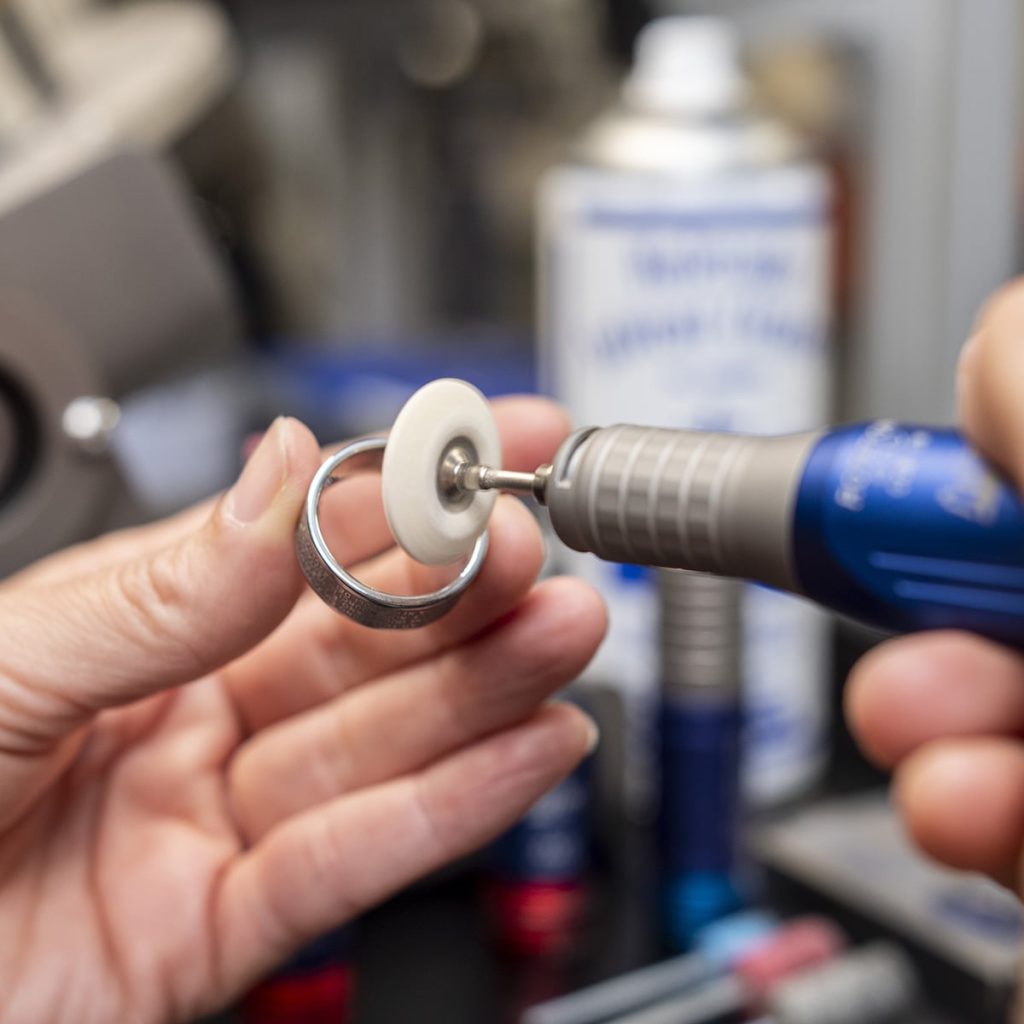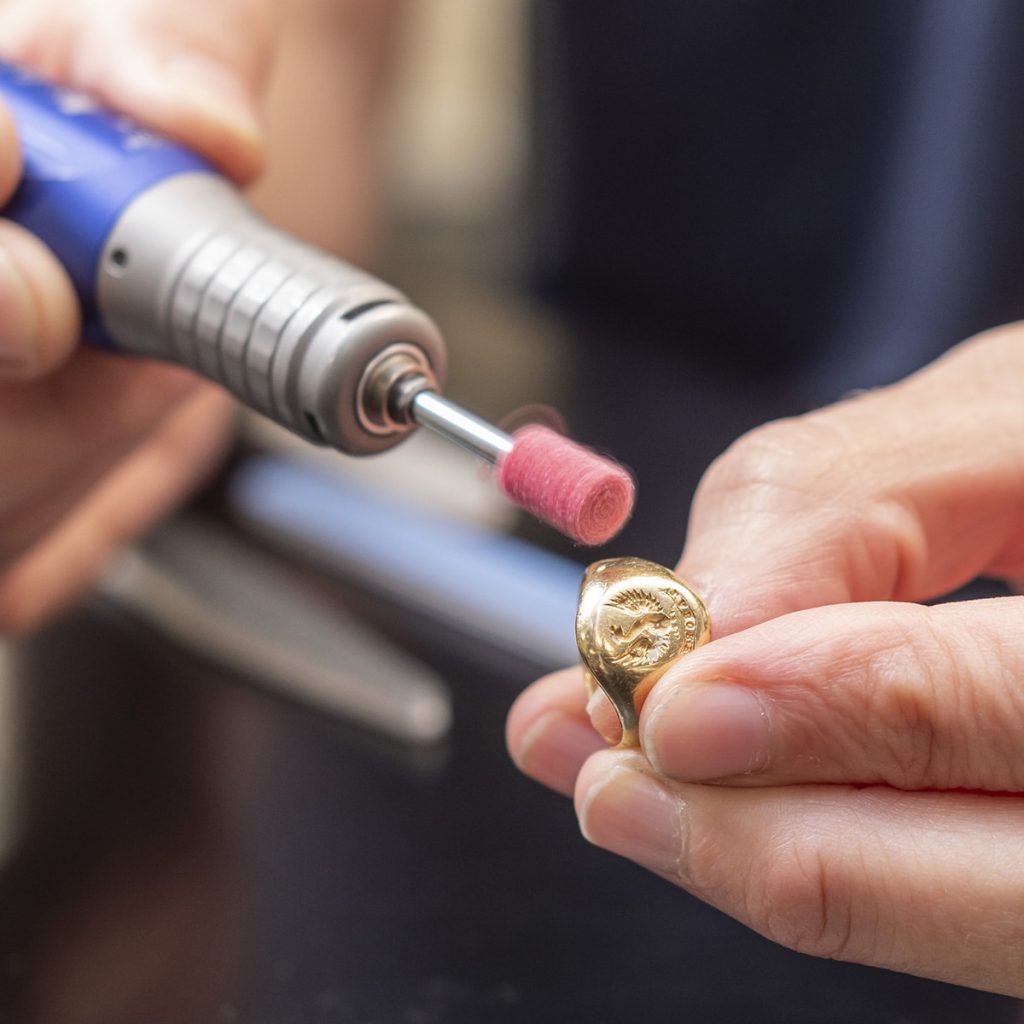Polish a ring to the best possible finish: The secret tool that all pro jewellers use when polishing jewellery pieces.
Polishing Jewellery supplies over 3,000 polishing products. Here we shed the spotlight on one product and let you into a secret about what all jewellers are using to polish their rings to get the best finish possible.
Micromesh – The best tool to polish a ring
Micromesh is the best kept secret in the business. In this blog we detail why Micromesh is what all jewellers are talking about. It’s the best product to achieve the best finish when you polish a ring.

What is Micromesh?
Micromesh is a brand of abrasive material widely used for fine sanding and polishing applications. It consists of flexible sheets or pads embedded with micro-sized abrasive particles. Micromesh abrasives are available in various grit sizes, typically ranging from 1500 to 12000.
What sets Micromesh apart when polishing rings
What sets Micromesh apart from traditional sandpaper is its unique construction and uniform abrasive particles. The abrasive particles are precisely graded and adhered to a flexible backing material, such as fabric or foam. This design allows for consistent and controlled abrasive action, resulting in a smoother finish with reduced risk of scratches or gouges.
Micromesh abrasives are commonly used in jewellery making. It is particularly effective for polishing and refining the surfaces of delicate materials such as metals and plastics.
Micromesh abrasives can be used wet or dry, depending on the application. When used wet, water acts as a lubricant and helps to minimize heat and friction during the sanding or polishing process.
In addition to its use for surface finishing, Micromesh is also known for its applications in restoration, repairing surface defects, and eliminating blemishes on various materials.
Micromesh abrasives are favored for their consistent performance, flexibility, and ability to achieve high-quality finishes on a wide range of materials.
What Micromesh do you need to polish a ring?
Polishing a ring using Micromesh involves a multi-step process that gradually refines the surface and achieves a smooth, polished finish. Here’s a general guide on how to polish a ring using Micromesh:
Materials Needed:
- Micromesh abrasives (available in various grits, typically ranging from 1500 to 12000)
- Water
- Soft cloth or polishing pad
- Optional: polishing compound or jeweller’s rouge
Step-by-Step Process:
1. Prepare the work area:
Set up a clean and well-lit workspace. Place a soft cloth or polishing pad on the surface to protect the ring and provide a cushioned work area.
2. Clean the ring:
Before starting the polishing process, ensure that the ring is free from dirt, oils, or other contaminants. Dry the ring completely before proceeding.
3. Begin with lower grits:
Start with a lower grit Micromesh abrasive, such as 1500 or 1800. Wet the abrasive with water to create a slurry. Gently rub the ring’s surface in a back-and-forth or circular motion, applying light pressure. Continue until the desired initial smoothness is achieved.
4. Progress to higher grits:
Move on to the next higher grit Micromesh abrasive (e.g., 2400 or 3200) and repeat the process. Wet the abrasive with water and polish the ring’s surface in the same manner as before. Work through progressively higher grits, refining the surface with each step. Continue until you reach the finest grit available (e.g., 12000).
5. Rinse and inspect:
After each grit, rinse the ring under running water to remove any residue or particles. Inspect the ring’s surface to ensure the desired level of smoothness and polish has been achieved. If necessary, repeat the process with finer grits until you’re satisfied.
6. Optional:
Apply polishing compound or jeweller’s rouge: If you desire an even higher level of shine, you can apply a small amount of polishing compound or jeweller’s rouge to a clean, soft cloth or polishing pad. Gently buff the ring’s surface using light pressure and circular motions. This step helps bring out additional luster and shine.
7. Final cleaning:
Once you’re satisfied with the polish, rinse the ring thoroughly under running water to remove any remaining abrasives or polishing compound. Dry the ring gently with a soft cloth to avoid scratching.
Remember, the process and specific grits may vary depending on the material and condition of your ring. Take caution not to apply excessive pressure, especially on delicate or intricate parts of the ring.
More Information
For more information on polishing give us a call – we have experts here who have been polishing for years!
And take a look at our You Tube page for videos of us hard at work finishing!

